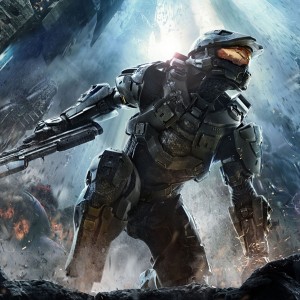Halo 4 proves a worthy addition to acclaimed series
The Halo series has always been one of the most revered franchises in video games. Its story and multiplayer features have been enjoyed by millions, and series protagonist Master Chief has become one of the major icons of the Xbox platform. So when news spread that the Halo franchise would be given to a new developer, 343 Industries rather than Bungie, many fans worried that it would be the end of an era. Don’t worry though, Halo 4 combines fan service and a few changes to create a worthy successor to the acclaimed trilogy.
Campaign
Halo 4 finds Master Chief still in a cryogenic state aboard the ship “Forward Unto Dawn.” He is awakened by his artificial intelligence companion Cortana once the ship reaches a planet known as Requiem. There, the rogue Covenant, one of the main enemy forces in the series, boards the ship, causing it to crash-land on the planet below.
Halo 4’s story focuses on the relationship between Master Chief and Cortana. Cortana is reaching the end of the natural life cycle for AIs, which is about seven years. Master Chief, while fighting the main antagonist, forerunner the Didact, must also try to fix Cortana; this story probably provides the most emotion for Master Chief that players have seen in a Halo game. You get to see how Cortana deteriorates over time, and also how it affects Master Chief, both emotionally and in action.
The campaign takes about six hours to complete, which is about average for a first-person shooter but seems to end relatively quickly. The campaign also adds a little more variety in the missions, throwing in quick-time events and vehicle missions, all of which work well within the story. The main antagonist, however, only makes an appearance a couple times during the story, and never seems to be as developed as well as he could have been. But despite this slight issue, this is a campaign well worth completing, and it will provide some great fan service to long-time players.
Multiplayer
Multiplayer — or War Games, as it’s referred to in Halo 4 — is the standard by which all first-person shooters are measured nowadays, and Halo 4 doesn’t at all disappoint in this department. This version provides a much more customizable experience than before, while still maintaining the classic Halo gameplay fans have always loved. The classic Halo game modes are here, including Team Slayer, Slayer, Capture the Flag, Oddball and King of the Hill. Fan-favorite game mode Grifball is now its own playlist, along with Flood (previously known as Infection). The maps are well designed, allowing for all different styles of play, whether slow and tactical or run-and-gun, to be viable in the multiplayer environment.
The game’s biggest change to the multiplayer experience is in the player customization. Players can now create their own custom loadouts, allowing them to pick their own primary weapon, pistol, grenade, tactical package and support upgrade. Though this feature was briefly explored in Halo: Reach, Halo 4 allows you to cater your loadout to your playing style. Similar to Call of Duty, there are even challenges that unlock experience for earning a certain amount of kills or medals, and the commendations from Halo: Reach return, updating every day, week or month.
Armor customization is just as big a part of this game as in previous games, allowing for thousands of possible armor combinations. And though the emblem customization hasn’t changed too much, it still provides enough of an opportunity to express yourself with a unique team player logo. But, you have to reach a certain level in order to unlock certain emblems, which is an unusual decision on 343 Industries’ part.
Spartan ops
Spartan Ops, Halo 4’s new game mode, is a story-driven series of multiplayer missions that 343 Industries adds to every week. Each mission, which takes about 15 minutes to complete, starts off with a cut-scene that gives you the mission objectives. All the missions culminate into one storyline, which is divided into seasons, allowing fans to receive new episodes every week, similar to a TV series.
Though the idea is innovative, and provides a longer story arc than the one in the campaign, it takes the place of Firefight, a horde-style game mode that was featured in Halo 3: ODST and Halo: Reach. Considering it was a popular choice for many fans, it seems a bit unusual that this game mode was excluded from this game. Fans hoping for a revamped Firefight experience will be sorely disappointed, although Spartan Ops does what it intends to do very well.
Final Verdict
If you’re afraid to continue the Halo series because of a new developer, don’t be. 343 Industries does an excellent job continuing the storied franchise, making sure to keep the campaign and multiplayer up to Halo standards while adding its own unique elements to the franchise. Though Spartan Ops isn’t as successful, and doesn’t quite fill the void left behind by Firefight, Halo 4 still serves up a compelling experience that will keep old and new fans alike glued to their controllers.

Halo#1